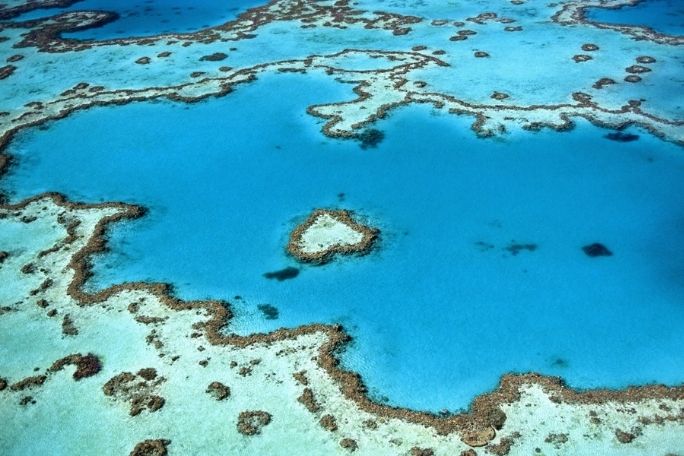Lesson summary
Students explore how nature makes them feel, the Australian places in nature that they love, and how these places might be affected by climate change. Students begin this lesson by participating in a vocabulary exercise about words such as ‘awe’, ‘astound’, ‘marvel’ and ‘inspire’. They then spend time outside in nature, and use a ‘Rake thinking tool’ to investigate how they experience nature and connect to it emotionally.
Using images collected before the activity, students create a collage and supporting presentation to share the places they love in Australia with classmates. Students will then look at how these places might be affected by climate change. Finally, students will create a postcard to encourage their local community to participate in Earth Hour.
This lesson has been translated into Mandarin for intended use in a LOTE class.
快速总结: 学生探索自然让他们感受的方式,他们喜欢澳大利亚自然景点,这些地方可能如何受到气候变化的影响。学生通过参加一个关于“敬畏”`的词汇练习,如“震惊”,“震惊”,“奇迹”和“感发”等的词语,开始这节课。然后,他们花时间户外体验自然,使用Rake思维工具,调查他们如何体验自然,并在情感上连接自然。使用活动之前手机的图片,学生创建拼贴和支持的演示,与同学分享他们在澳大利亚喜欢的地方。学生将会看到这些地方如何可能受到气候变化的影响。最后,学生们将创作明信片鼓励当地社区参与2016年地球一小时。
Essential questions:
- Why do we need to value our environment?
- How do people and environments influence one another?
- How do people influence the human characteristics of places and the management of spaces within them?
- How do people’s connections to places affect their perception of them?
基本问题:
- 为什么我们需要珍惜我们的环境呢?
- 人们是如何和环境相互影响的?
- 人们是如何影响人类特征的地方和管理他们生活的空间呢?
- 人民与地方的联系如何影响他们的看法吗?
Lesson guides and printables
Lesson details
Curriculum Mapping
Australian Curriculum content descriptions:
Year 5 HASS:
- The influence of people, including Aboriginal and Torres Strait Islander Peoples, on the environmental characteristics of Australian places (ACHASSK112)
- The environmental and human influences on the location and characteristics of a place and the management of spaces within them (ACHASSK113)
Year 6 HASS:
- The effects that people’s connections with, and proximity to, places throughout the world have on shaping their awareness and opinion of those places (ACHASSK142)
General capabilities: Literacy, Critical and Creative Thinking, Personal and Social Capability.
基本能力:识字,批判性和创造性的思考,独立和合作的能力。
Cross-curriculum priority: Sustainability OI.6, OI.7, OI.9.
跨学科优先权:Sustainability OI.6, OI.7, OI.9.
Unit of work: Earth Hour – Primary.
工作单元:地球一小时 – 初级
Time required: 60 mins x 2.
时间需求: 60分钟 x 2
Level of teacher scaffolding: Medium – oversee activities and facilitate discussions.
教师基架级别:中等 -监督活动和促进讨论
Resources required
- Student Worksheet – one copy per student OR computers/tablets to access the online worksheet
- Device capable of presenting a website to the class
- One copy of Rake thinking tool worksheet for each student. Cameras (phones or tablets are OK)
- One printed postcard template for each student: Earth Hour Blank Postcard Template and postcard making materials (paper, pens, etc).
- 所需资源: 学生表,每个学生一个副本或电脑/平板电脑访问在线工作表。能够向全班展示网页的设备。每位学生一份Rake 思考工具工作表。相机(手机或平板电脑都可)。每个学生一个打印版的明信片模板:地球一小时空白明信片模板和明信片制作材料(纸、笔等)。
Additional info
This lesson has been created in partnership with WWF-Australia. Earth Hour is the world’s largest community-driven climate change campaign. At the centre of Earth Hour is switching off lights to show a commitment to taking action.
Thousands of teachers use Earth Hour’s education program to enrich their curriculum and provide pathways for young people to create change in their world.
For the most up to date Earth Hour dates, times, and events, check here.
2020年,澳大利亚的地球一小时将庆祝我们爱的地方。这些地方让我们的假期,户外生活方式和澳大利亚的生活方式如此美好: 我们惊艳的海滩,河流,珊瑚礁,雪山,农村地区和国家公园,这些让澳大利亚成为与众不同的“幸运国家”。你可以成为活动的一部分,开始对气候变化采取行动。通过访问earthhour.org.au注册熄灯或找到你的本地事件。注册参加3月27日(周五)的地球一小时学校活动日,同时,别忘了在地球一小时,3月28日(周六)晚上8:30-9:30关灯。


Welcome back!
Don't have an account yet?
Log in with:
By signing up to Cool.org you consent and agree to Cool's privacy policy to
store, manage and process your personal information. To read more, please see
our privacy policy here(Opens in new tab).
Create your free Cool.org account.
Many of our resources are free, with an option to upgrade to Cool+ for premium content.
Already have an account?
Sign up with:
By signing up to Cool.org you consent and agree to Cool's privacy policy to
store, manage and process your personal information. To read more, please see
our privacy policy here(Opens in new tab).